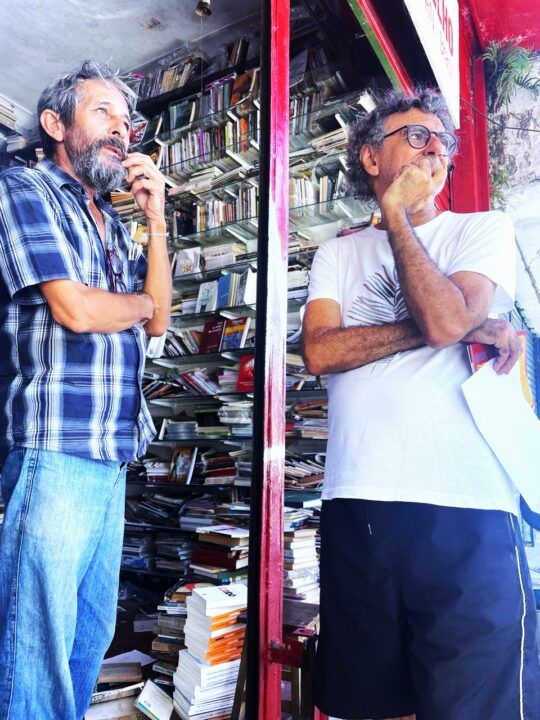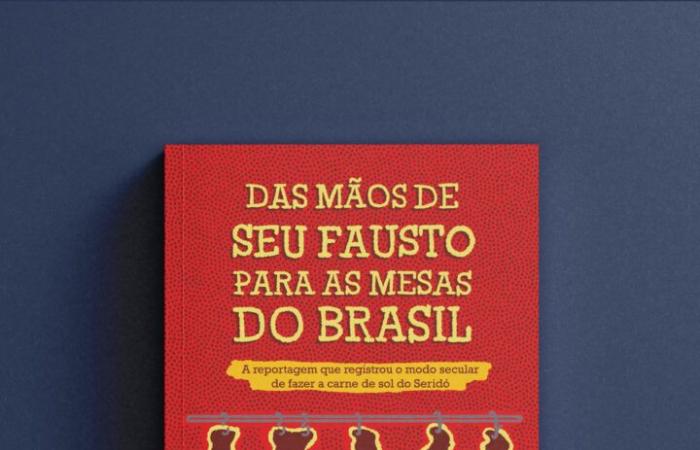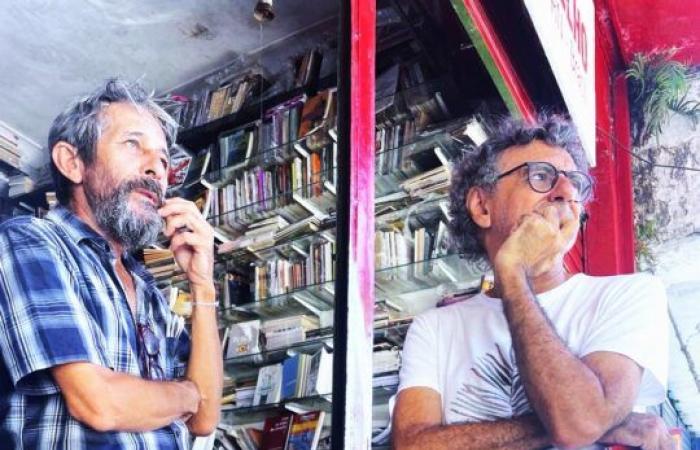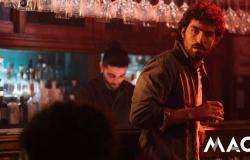If readers have an appreciation for the Potiguar culture and the traditions of the people of Seridó, especially the anthology of their gastronomy, anchored in many stories that go behind the scenes of a reporting team in practice, the book From the hands of Mr. Fausto to the tables of Brazil – The report that recorded the centuries-old way of making Seridó’s sun-dried meat will not disappoint you. This is the title of the work that the author and journalist from Rio Grande do Norte Osair Vasconcelos launches this Saturday (2), starting at 10 am, at Sebo Vermelho, which is located on Avenida Rio Branco, in the center of Natal.
Under the seals of publishers AZ, belonging to the author, and Sebo Vermelho, the book, as the title suggests, re-presents to the public the letters and forms of a report produced by Osair Vasconcelos and photographer Giovanni Sérgio, in 1986, for Globo magazine Rural, from publisher Globo, about the ancient way of producing what we know as sun-dried meat, which, ironically, doesn’t go in the sun at all. The method originated in lands where the star king is ungenerous most of the time, 17th century Europe, by the Moorish people.
The publication, however, is not intended as a recipe guide or to establish itself as a gastronomic work. It is, first and foremost, about culture and tradition. The report, produced in the 1980s, in the midst of the country’s redemocratization process, sought to tell how people from the Northeast obtained the delicacy that became desired and consumed in other parts of Brazil based on the identity of a very peculiar population that was that of Seridó region, where this type of protein gained fame, and how this production reached the northeastern hinterland.
The magazine had drawn the tutorial for this process in letters, and like a good self-respecting report, it had its human element as its guiding axis. What the author sought in this republication of the news, although it is the center of the work, was to tell and relive the behind-the-scenes stories following this character covered in the report, Seu Fausto. In addition to the revisit, the book is a rescue of memories that the two professionals lived on this journey.


“We turned the report into a book. The report has not been modified in any way, it is original as it appeared in the magazine at the time. We just couldn’t recover the original photos. For this publication, there is a photo that Giovanni Sérgio took specifically for the book, besides, I write a making off of how Giovanni and I made this report, from the time we left Christmas on January 3rd, 1986 and we took a bus, at 10pm, from the Cidade da Esperança bus station until Mr. Fausto arrived at Granja Barra Nova, to follow the process that lasted four days”, recalls the author.
What makes From the hands of Mr. Fausto to the tables of Brazil – The report that recorded the centuries-old way of making Seridó’s sun-dried meat A book to be seen and read is exactly the stories and moments lived in this endeavor. It is possible to say that of the six books that Osair Vasconcelos has already published, this is the one that most appeals to a reporter’s memories.
“Reliving these professional memories for me, of course, has a very deep meaning because, in my journey as a reporter, this was a very rich experience from a personal point of view to fulfill the request of Humberto Pereira, a Minas Gerais native who made his journalistic career in São Paulo and creator of Globo rural magazine and the Globo Rural program, on TV Globo. He called Woden Madruga asking for a recommendation for a reporter. And off we went.”
The report was published in issue no. 5 of Globo Rural magazine, by whom it was commissioned. Almost four decades later, editor Abimael Silva discovered that this is the only written record that narrates the original process of making corned beef. From this, this book was born: From the hands of Fausto to the tables of Brazil – The report that recorded the centuries-old way of making Seridó’s sun-dried meat.
The book brings, in addition to the report, testimonies by Abimael Silva, Humberto Pereira (the creator of Globo Rural – magazine and TV program), Albimar Furtado and the afterword by Vicente Serejo, and photo produced by Giovanni Sergio, which gives an artistic touch to the book. Furthermore, Osair Vasconcelos reports how the report was made, from leaving Natal until the meat was taken to the stalls at the Caicó fair.
Osair Vasconcelos is preparing to launch another publication on March 8th in Macaíba, and, therefore, Agência Saiba Mais wanted to know the author’s vision of the state’s publishing scene. He assesses:
“The editorial universe in Rio Grande do Norte is very good. Here, hundreds of books are published per year, of various styles, poetry, chronicles, reports and stories. Anyway, we have a very wide variety of launches in the state that puts RN in a prominent place in the national panorama. We have many good authors. Reading remains alive and present in various layers of society. I welcome this and am happy to contribute minimally both writing and editing. In fact, on March 8th, four friends and I are going to launch a book in Macaíba called Eu Me Recordo – Memonças de Macaíba. They are chronicles, reports and memories that we have from our time as children and teenagers, doing those things that children and teenagers do or did in other times”.
ABOUT THE WORK
From the hands of Mr. Fausto to the tables of Brazil – The report that recorded the centuries-old way of making Seridó’s sun-dried meat – Osair Vasconcelos
. Graphic project – Vitor Marinho
. Cover art and woodcuts – Aureliano Medeiros
. Photograph – Giovanni Sérgio
. Edition -Sebo Vermelho and Z Editora
LAUNCH: Saturday, March 2nd, from 10 am.
Local: Sebo Vermelho – Av. Rio Branco, 705








